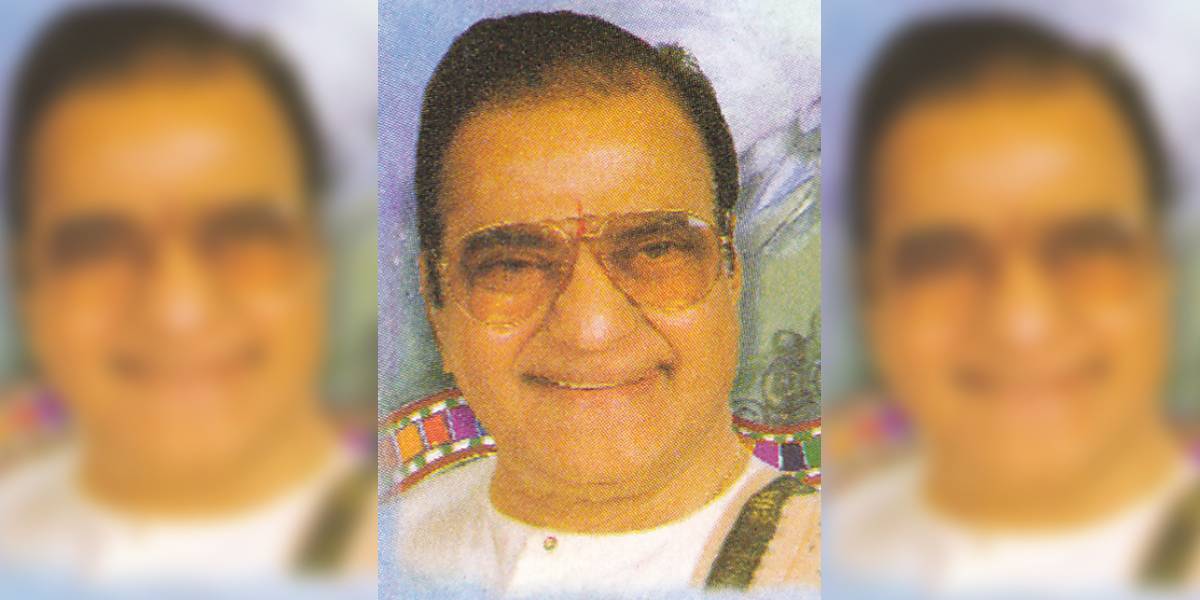Municipal Administration Minister P Narayana has reviewed the project with consultants, confirming soil testing and site surveys at Neerukonda.
Published Oct 01, 2025 | 8:00 AM ⚊ Updated Oct 01, 2025 | 8:00 AM

Former Andhra Pradesh Chief Minister NT Rama Rao
Synopsis: According to preliminary allocations, ₹150 crore would go towards statue fabrication (using technology similar to Gujarat’s Statue of Unity), ₹200 crore for the pedestal and museum, and ₹150 crore for convention facilities and public amenities. Funding is expected to come from the state’s capital outlay, with potential public–private partnerships for tourism operations.
Amidst mounting liabilities and fiscal stress, Andhra Pradesh Chief Minister N Chandrababu Naidu has revived a signature idea from his earlier tenure: a towering memorial named NTR Smritivan atop Neerukonda Hill near Amaravati.
The project envisions a 600-foot (182-metre) bronze statue of NT Rama Rao (NTR), surrounded by a cultural hub. While the government has yet to release a final cost estimate, sources said it could entail an investment of ₹500 crore, down from the ₹1,000 crore proposal floated in 2018.
According to preliminary allocations, ₹150 crore would go towards statue fabrication (using technology similar to Gujarat’s Statue of Unity), ₹200 crore for the pedestal and museum, and ₹150 crore for convention facilities and public amenities.
Funding is expected to come from the state’s capital outlay, with potential public–private partnerships for tourism operations.
Officials project 50 lakh annual visitors, generating about ₹200 crore in revenue through ticketing, events, and souvenirs. Supporters point to Gujarat’s experience, where the Statue of Unity earns close to ₹300 crore a year and is credited with creating thousands of jobs.
The plan comes at a time of financial strain. The 2025–26 state budget estimates Andhra Pradesh’s non-borrowing revenue receipts at ₹2,18,002 crore, while annual debt servicing alone stands at Rs 24,430 crore. With total liabilities—including on- and off-budget borrowings—expected to cross ₹11.2 lakh crore this fiscal year, space for new discretionary projects is narrow.
Finance Minister Payyavula Keshav has acknowledged the pressure, pointing out that “90% of revenue goes to salaries, pensions, loans, and interest,” leaving little room for capital expenditure. The Comptroller and Auditor General (CAG) has also flagged “large-scale borrowings,” prompting questions about the sustainability of new commitments.
In July, Municipal Administration Minister P Narayana reviewed the project with consultants, confirming soil testing and site surveys at Neerukonda. Plans include a museum chronicling NTR’s cinematic and political journey, galleries on Telugu literature and freedom fighters, a mini-theatre, a convention centre, lifts and escalators, and landscaped spaces around a nearby reservoir.
Naidu has described the project as a cultural and tourism anchor within his plan to revive Amaravati, alongside work on the new Assembly building, secretariat, and civic infrastructure.
For supporters, NTR Smritivan is more than symbolism. They frame it as an investment in tourism and identity—an icon that could brand Amaravati globally while expanding revenue streams.
The project is being seen as one of indulgence at odds with fiscal realities. With debt, welfare outlays, and subsidies already stretching the exchequer, investing ₹500 crore in a statue risks deepening financial gaps.
For now, Neerukonda’s slopes carry two competing narratives: one of ambition and legacy, the other of caution and restraint.
(Edited by Majnu Babu).
